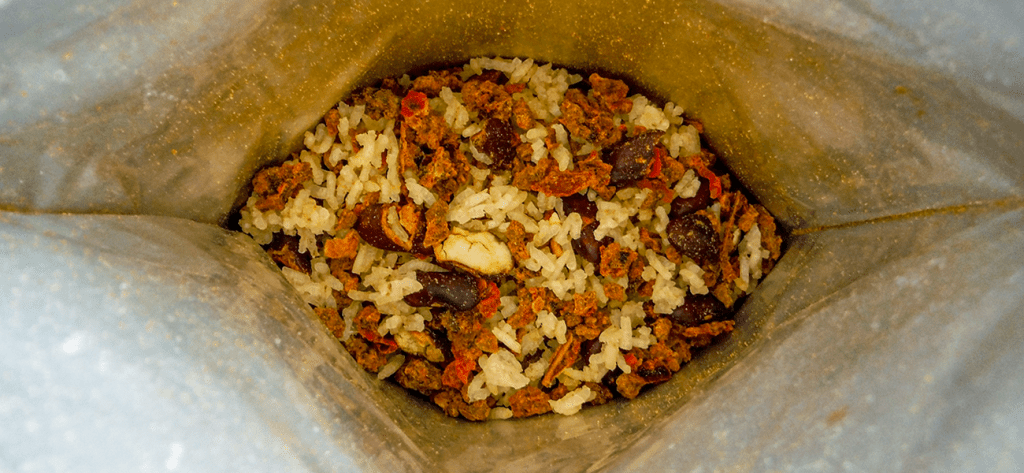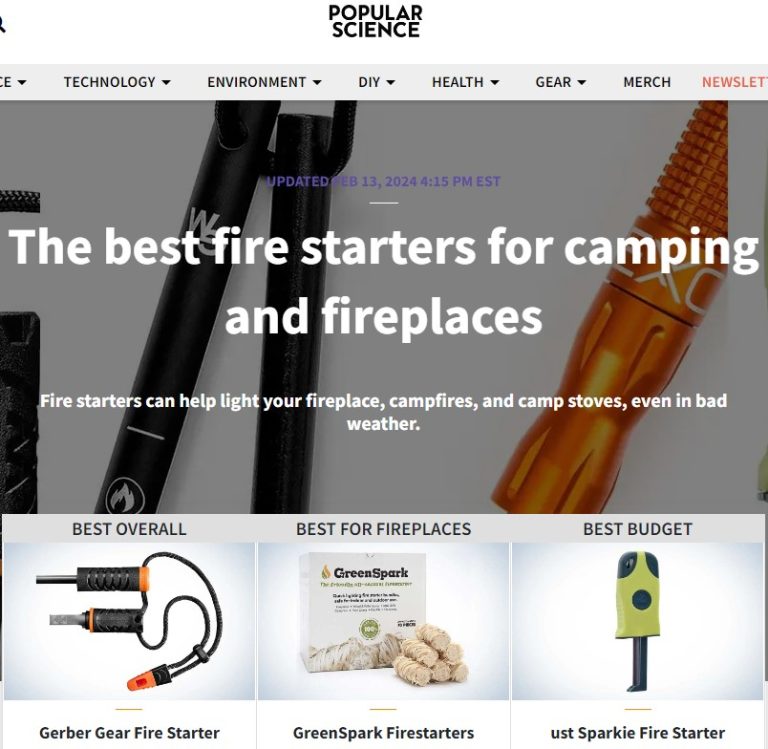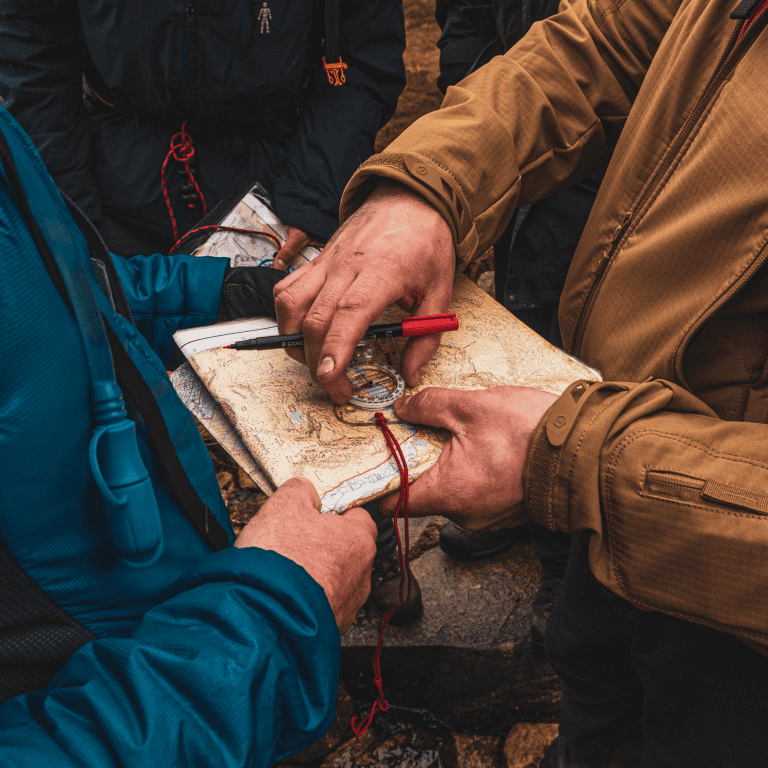
Wild Camping - what are we going to eat?
22nd May 2019
This is a common question from clients who are heading out for their first ‘wild’ camping trips in the mountains and forests of the UK – what am I going to eat?
We have normally gone through the laws of wild camping and taken a good look at the other parts of the equipment list, but food can sometimes be a bit of an afterthought. Wet or dry, bought or made – and just how much do I need to bring?
In this article I am going to look at two different aspects of packing food for a wild camping or UK backpacking trip – the type of food carried, and the amount. Pack weight and volume come into it, as do cooking options, access to water and just how much energy you are going to expend.
Camping Food Types
When I am looking at food for camping and backpacking it comes down to three things:
– Weight/packed volume
– Taste
– Nutrition
It’s easy enough to find foods that can be carried in a rucksack for a day or two and will be perfectly edible once reheated in a pan over a stove – but if they are the heaviest and bulkiest items in your kit then you won’t get very far. The food also needs to be tasty enough to eat when you are cold, wet or tired – it’s not unusual for an appetite to disappear when fatigued and a warm sleeping bag is calling to you, but food is fuel and your physical and mental performance may start to suffer when you miss out on the calories. The mountains and wilderness regions are not the places to take up intermittent fasting or the 5:2 diet.
Nutrition is another key factor; sugar and simple carbohydrates are both lightweight and tasty – but not much good for a slow, steady release of energy or for long mountain days.
If you can keep an eye on all three of those factors when considering the food on your kitlist then you can start to make decisions on which type of foods you’re going to choose. They can be broken down into the following types:
Pre-Prepared ‘wet’ Meals
These are the types often found in soft, foil pouches on racks in camping shops, or as components in civilian or military ration packs/MREs. They are pre-cooked and can be safely eaten cold, or heated up in the pouch by dunking the (unopened) pouch in boiling or hot water.
Because they are ready-to-eat when cold and without additional preparation (a bit like a tin of baked beans – edible unheated, but not the best) they are also heavy, and quite bulky. Sometimes referred to as ‘wet’ food, packs and pouches like this contain a substantial amount of water/fluid in the accompanying sauces which makes them fairly heavy. They are often about twice the weight of dehydrated/dry meal pouches, if not slightly more.
Good because
- Can be eaten cold or with no preparation
- No mess, can be heated without dirtying a pan and eaten straight from the pouch
- Good selection available
- Long shelf life
Not -so-good because
- Heavy due to water/liquid content
- Often high in sugar and palm oil
Dehydrated and Freeze-Dried Meals
Over the past 20 years or so this type of camping meal has become more popular, and there are lots of new companies springing up every year. We reviewed the Firepot range last year, and a review of the TentMeals range is coming in a few weeks.
The two main methods for removing moisture from these meals are dehydration and freeze-drying. Dehydration involves passing warm air over the food and removes around 90-95% of the moisture, whereas freeze-drying involves lowering the temperature of the food, then removing the ice by sublimation – this removes about 97-99% of the moisture. Freeze-dried meals have a longer shelf life, but there is minimal weight difference between dehydrated and freeze-dried foods. A lot of people claim that dehydrated foods taste slightly better, but I personally don’t notice much of a difference.
Whatever the method for removing the moisture in the food, the method for rehydration is often the same. As the food is already cooked before being dried it can be safely rehydrated with cold water, but taste and consistency is always improved by using boiling or hot water.
Good because
- Lightweight (roughly 100-200g per meal)
- No mess, can be eaten straight from the pouch once rehydrated
- Often healthier than ‘wet food’ pouches
- Long shelf life
Not -so-good because
- Requires some preparation and additional resources to be edible
- Gas/heat source consumables need to be considered
- Clean water needed for every meal
Supermarket Dried Meal Ingredients
Although broadly similar to the dedicated dried food pouches for camping and backpacking, these food types are sold for domestic use. With a bit of careful thought and creativity they can be used by wild campers and trampers – indeed, dried noodles and instant cup-soups have been a staple of my backpacking menus for nearly two decades.
The main drawback is the extra preparation and mess that comes with buying individual ingredients – they will need to be rehydrated in a pan or container of some sort, so you run the risk of accidentally welding it to the inside of a pan. There is also potential problem of calculating portion sizes and measuring it out at camp and avoiding the problem of inadvertently eating more than your daily allocation.
If you can live with that extra hassle then you can create some elaborate and varied meals with a short list of ingredients, and combining dried ingredients with small amounts of ‘wet’ food (such as adding a tin of tuna to cooked dried pasta) gives you even more variety. It is worth exploring the dried goods aisles of your local supermarket to see just what you can pick up easily – but always remember that you are limited to a stove and pan in your preparation equipment.
Good because
- Lightweight
- Much cheaper
- Variable combinations and portion sizes
Not -so-good because
- Requires some careful preparation and measurement
- Takes longer to shop/procure
DIY Camping Meals
Although combining various off-the-shelf dried and long-life foods is a DIY solution, there are plenty of other ways you can prepare your own camping meals – even if it’s just putting cooked leftovers in tupperware and throwing it into your rucksack.
Domestic counter-top dehydrators are surprisingly cheap and easy to use (something like this), so cooking meals at home and then dehydrating them to take with you on trips is a realistic option. If you combine a dehydrator with other gadgets such as a vacuum-sealer then you aren’t far off making your own long-life camping meals.
As well as the extra work involved in preparing and experimenting with your own camping foods there is another factor to consider – food safety. You may be quite happy eating leftover food two days after cooking it when it has been stored in a fridge, but what about when it has been festering in a ziploc bag in your rucksack for a day or two? This is much less of a problem when dehydrating food yourself, but when carrying fresh food and ingredients you should give careful consideration to how you are going to store and transport it.
Good because
- Cheaper (after initial outlay)
- Lots of variation and choice
- Comfortable/familiar food from known sources
Not -so-good because
- Experimentation and preparation needed
- Requires cooking skills
- Potential food-safety risks
Snacks
This is a little easier than finding main-meal options for backpacking and wild camping as bars, biscuits and nibbles often come in smaller packets and are made for reasonably long shelf-lives. Chococlate, cereal and biscuit bars are the obvious choice, along with dried fruits, nuts and small sweets. The infamous mix of those fruit, nuts and small pieces of chocolate and sweets has proven popular with many trail hikers and long-distance backpackers (me included…).
Homemade biscuits, bites and other small foods are easy to make and there are thousands of recipes online on blogs and forums – from peanut-butter balls to Lembas bread for the Tolkein fans.
How much food will I need?
The very short answer is “slightly more than you expect to eat”…
There are many possible approaches to this, and my strategies for food and eating for a short or medium-length backpacking trip are very different to what I would take for a day trip into the mountains or forests. For single-day trips I tend to take food that I can nibble on at various points throughout the day – specially if I am going to be moving all day without stopping for longer than 15-30 minutes at a time.
When backpacking the pace slows right down, and I take advantage of the fact I have more time and don’t have to return back to the valley by stopping for a meal somewhere in the middle of the day.
With that in mind, I calculate how much food I will need by how many meals I will be consuming whilst walking/moving, and then work things out from there. If I am heading out for a two-night trip my food list might look something like this:
Breakfast (x2)
- Breakfast bar
- Instant oats/porridge
- Coffee
Lunch (x3)
- Oatcakes
- Peanut butter (squeezy tube)
- Instant soup
- Dried fruits/nuts
Evening Meal (x2)
- Dehydrated meal pouch
- Chorizo (sliced) or tuna
- Instant soup,or noodles if a particularly long or hard day
Snacks and Drinks
- Cereal bars
- Peanut balls (homemade)
- Dried fruit/nut/chocolate mix
- Coffee (either instant or ground depending on weight and length of trip)
That list would just about supply me with the calories I need, plus enough to cover any possible mishaps (losing food, gas stove not working so I cannot rehydrate food properly etc) or even just miscalculation about how much food I would eat. I always aim to end short mountain trips with food still in my bag, and if I run out then something has gone wrong somewhere in my planning.
If you are working your way up to your first wild camping trip then you’ll probably have a good idea of how hungry you are, and how your body responds to more or less food. For your first trip it is better to err on the side of caution and carry plenty of food, but not enough to slow you down.
If you are concentrating on calorie intake then the previously recommended adult guidelines of 2,000 calories for women and 2,500 for men is a good starting point. How you acquire those calories does make a difference of course – too much sugar and you will be on a constant cycle of peaking and crashing on a glucose high, but your first overnight backpacking trip is not the time to experiment with the paleo diet.
A Mountain Leader with over a decade of experience across the UK and overseas, Richard is our Lead Instructor and a partner in Original Outdoors. He is a specialist in temperate wilderness skills and the wild foods of the British Isles, and also works as a consultant for various brands and organisations. Richard lives in North Wales.
A Life more Wild.
A Life More Wild is the philosophy which underpins everything we do.
It encompasses practical skills, personal development, community learning and a journey to live more intentionally.





